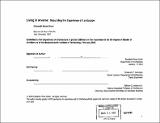| dc.contributor.advisor | Fernando P. Domeyko. | en_US |
| dc.contributor.author | Silver, Elizabeth Rose, 1974- | en_US |
| dc.contributor.other | Massachusetts Institute of Technology. Dept. of Architecture. | en_US |
| dc.date.accessioned | 2005-09-26T19:25:44Z | |
| dc.date.available | 2005-09-26T19:25:44Z | |
| dc.date.copyright | 2003 | en_US |
| dc.date.issued | 2003 | en_US |
| dc.identifier.uri | http://hdl.handle.net/1721.1/28261 | |
| dc.description | Thesis (M.Arch.)--Massachusetts Institute of Technology, Dept. of Architecture, 2003. | en_US |
| dc.description | Includes bibliographical references (p. 129-131). | en_US |
| dc.description.abstract | How do we approach the inhabitation of a landscape? Starting with an understanding of the ecological system, the design acts as an enabler to the landscape, both at the scale of the urban plan and at the scale of the architecture. By paying attention to the forces of the air and water, the newly built landscape reveals these underlying systems in the experience of this newly formed place. While this design process can be generalized, it reaches its fullest expression by looking at a particular place. This thesis tackled developing Arverne, a once vibrant beach community on the eastern end of the Rockaway Peninsula, only fifteen miles from Times Square. The community of Arverne is part of one of the most significant landscapes in the United States, the barrier island system that runs the length of the eastern seaboard. Situated at the boundary between this powerful landscape and the city, any design must seek to balance both. The goal of the design is more than simply to allow the functioning of the city and nature side-by-side but to create an understanding of the landscape through the experience of this place. The ultimate value of these experiences lies in their ability to foster a new realization of a person's relationship to the landscape and consequently a better sense of their own and the community's identity. | en_US |
| dc.description.statementofresponsibility | Elizabeth Rose Silver. | en_US |
| dc.format.extent | 131 p. | en_US |
| dc.format.extent | 12072585 bytes | |
| dc.format.extent | 23896869 bytes | |
| dc.format.mimetype | application/pdf | |
| dc.format.mimetype | application/pdf | |
| dc.language.iso | en_US | |
| dc.publisher | Massachusetts Institute of Technology | en_US |
| dc.rights | M.I.T. theses are protected by copyright. They may be viewed from this source for any purpose, but reproduction or distribution in any format is prohibited without written permission. See provided URL for inquiries about permission. | en_US |
| dc.rights.uri | http://dspace.mit.edu/handle/1721.1/7582 | |
| dc.subject | Architecture. | en_US |
| dc.title | Living in Arverne : rebuilding the experience of landscape | en_US |
| dc.type | Thesis | en_US |
| dc.description.degree | M.Arch. | en_US |
| dc.contributor.department | Massachusetts Institute of Technology. Department of Architecture | |
| dc.identifier.oclc | 52392450 | en_US |
